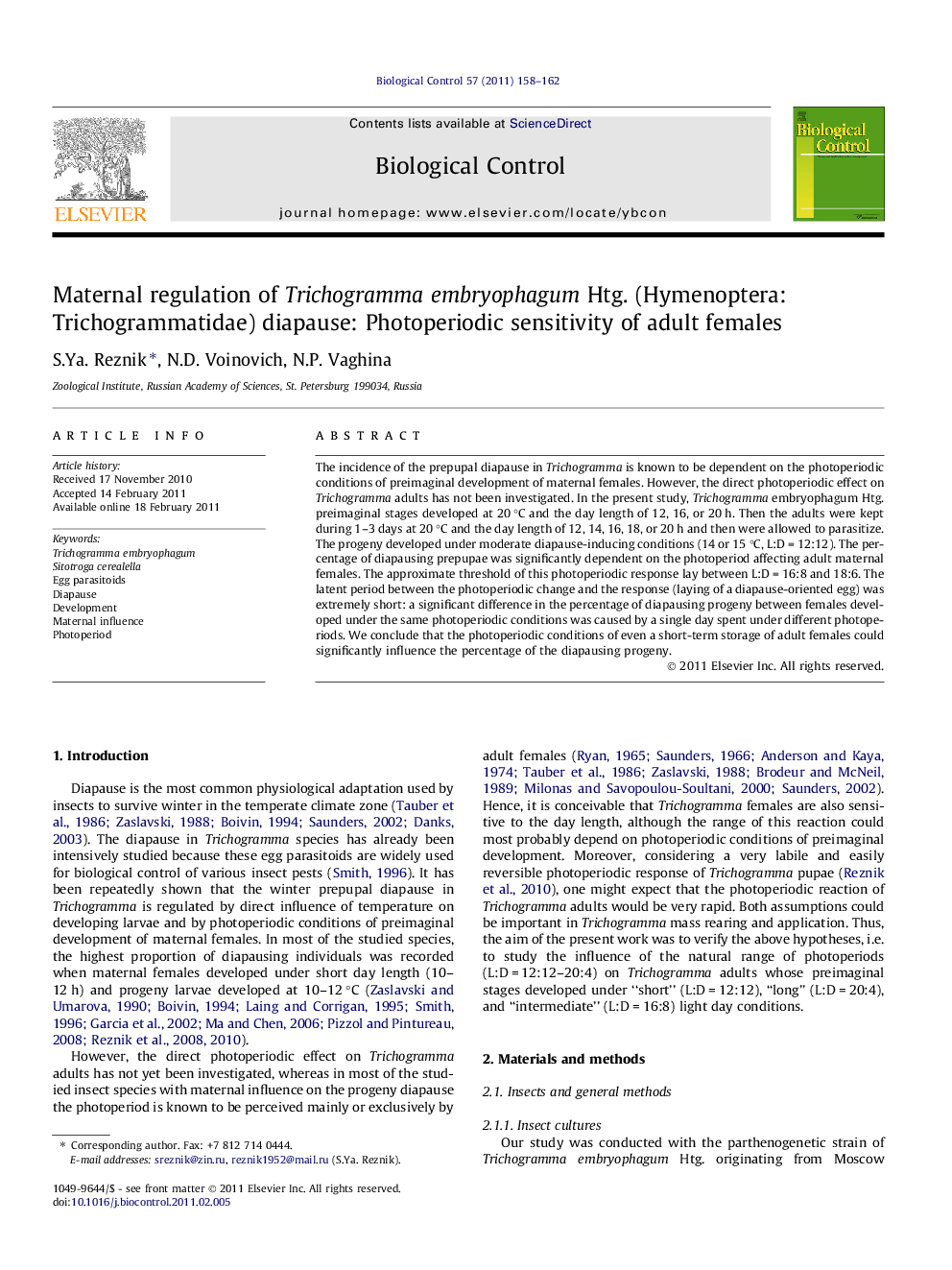| Article ID | Journal | Published Year | Pages | File Type |
|---|---|---|---|---|
| 4504213 | Biological Control | 2011 | 5 Pages |
The incidence of the prepupal diapause in Trichogramma is known to be dependent on the photoperiodic conditions of preimaginal development of maternal females. However, the direct photoperiodic effect on Trichogramma adults has not been investigated. In the present study, Trichogramma embryophagum Htg. preimaginal stages developed at 20 °C and the day length of 12, 16, or 20 h. Then the adults were kept during 1–3 days at 20 °C and the day length of 12, 14, 16, 18, or 20 h and then were allowed to parasitize. The progeny developed under moderate diapause-inducing conditions (14 or 15 °C, L:D = 12:12). The percentage of diapausing prepupae was significantly dependent on the photoperiod affecting adult maternal females. The approximate threshold of this photoperiodic response lay between L:D = 16:8 and 18:6. The latent period between the photoperiodic change and the response (laying of a diapause-oriented egg) was extremely short: a significant difference in the percentage of diapausing progeny between females developed under the same photoperiodic conditions was caused by a single day spent under different photoperiods. We conclude that the photoperiodic conditions of even a short-term storage of adult females could significantly influence the percentage of the diapausing progeny.
Graphical abstractFigure optionsDownload full-size imageDownload as PowerPoint slideResearch highlights► The photoperiodic sensitivity of Trichogramma adults was first demonstrated. ► When the maternal females were kept under the short day, their progeny diapaused. ► Even a single short day significantly increased the percentage of diapausing progeny. ► Trichogramma adult sensitivity to the day length can be important to biocontrol.
